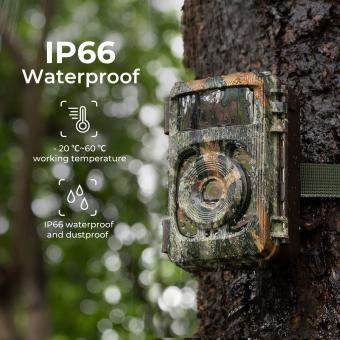How To Record On Pc With Audio?
In today’s digital age, recording on a PC with audio is a fundamental skill, whether you're creating content, capturing a lecture, or preserving a virtual meeting. This article provides a comprehensive breakdown of how to record on your PC with audio, the tools and techniques involved, and practical tips to optimize your experience.

## Why Audio Recording on PC Matters
Audio recording on a PC is essential for a variety of tasks:
- Content Creation: Podcasts, voiceovers, and tutorials often require high-quality recordings.
- Professional Use: Meeting recordings or interviews are vital for reference.
- Educational Purposes: Students can record lectures for later review.
Achieving a seamless recording requires attention to both the software and hardware used.
---
## Step-by-Step Guide to Recording on a PC
1. Understand Your PC Setup
Before recording, evaluate your PC's hardware and software capabilities:
- Microphone: Internal microphones are convenient but often lack quality. External USB or XLR microphones provide better clarity.
- Sound Card: Ensure your PC's sound card supports audio input from your microphone and can process the desired audio quality.
- Operating System: Windows and macOS offer built-in recording tools, but their functionality may be basic compared to third-party software.
2. Choose the Right Recording Software
The software you select determines your recording's quality and editing flexibility. Here are some options:
Built-In Tools:
- Windows Voice Recorder: Found on Windows PCs, it is simple and ideal for quick recordings.
- QuickTime Player: A macOS utility for basic audio and video recording.
Free Software:
- Audacity: A powerful open-source tool with advanced editing options.
- OBS Studio: Though primarily for screen recording, it supports high-quality audio recording.
Paid Options:
- Adobe Audition: Professional-grade audio editing software.
- Camtasia: Excellent for combining audio and screen recordings, especially for tutorials.
3. Set Up Your Recording Environment
Ambient noise can ruin an otherwise good recording. Optimize your environment with these steps:
- Choose a Quiet Location: Minimize external sounds like traffic, fans, or background conversations.
- Use Acoustic Treatments: If possible, use foam panels or similar materials to reduce echo.
- Check Microphone Placement: Position your microphone at an appropriate distance (6-12 inches) to balance clarity and minimize distortion.
4. Configure Your PC Settings
Proper configuration ensures your PC captures high-quality audio:
- Input Device: Select your microphone as the primary audio input in your PC’s sound settings.
- Recording Levels: Adjust the input levels to prevent distortion or faint audio.
- Enhancements: Some operating systems provide features like noise suppression or echo cancellation.
5. Test Your Setup
Before recording, perform a test:
- Record a short clip to ensure the audio quality is acceptable.
- Adjust levels and eliminate issues such as clipping or background noise.
6. Begin Recording
With your setup optimized, start recording:
- Open your chosen software.
- Select the input source (microphone) and confirm other settings like format and quality.
- Click the record button and start speaking.
---
## Advanced Tips for High-Quality Recordings
1. Use a Pop Filter
A pop filter reduces plosive sounds (like “p” and “b”) that can create unwanted bursts of air in recordings.
2. Enable Monitoring
Monitoring lets you hear your own voice through headphones while recording. This feature helps you identify issues in real time.
3. Record in a High-Quality Format
Choose formats like WAV or FLAC for lossless quality, especially if you plan to edit or archive the audio.
4. Edit Your Audio
Post-production is crucial for professional results:
- Remove noise using tools like Audacity’s noise reduction feature.
- Equalize (EQ) the audio to balance frequencies.
- Normalize the recording to achieve consistent volume.
---
## Troubleshooting Common Issues
1. Low Audio Levels
- Solution: Increase the microphone gain in your recording software or operating system settings.
2. Background Noise
- Solution: Use noise reduction software or enhance your recording environment.
3. Echo
- Solution: Avoid recording in large, empty rooms or use acoustic treatment.
4. Distorted Audio
- Solution: Lower the input gain to prevent clipping.
---
## Applications and Use Cases
The ability to record audio on a PC has broad applications:
- Podcasting: High-quality audio elevates your podcast’s professionalism.
- Education: Record lectures, tutorials, or discussions for educational content.
- Professional Settings: Capture meetings or interviews for later reference.
Regardless of the purpose, a strong foundational understanding of the tools and techniques ensures success.
---
## Conclusion
Recording on a PC with audio is accessible and highly versatile, whether you’re a beginner or a professional. By understanding your hardware, selecting the right software, and following best practices, you can consistently produce high-quality recordings. With the guidance provided in this article, you’re well-equipped to start recording audio on your PC for any purpose.








